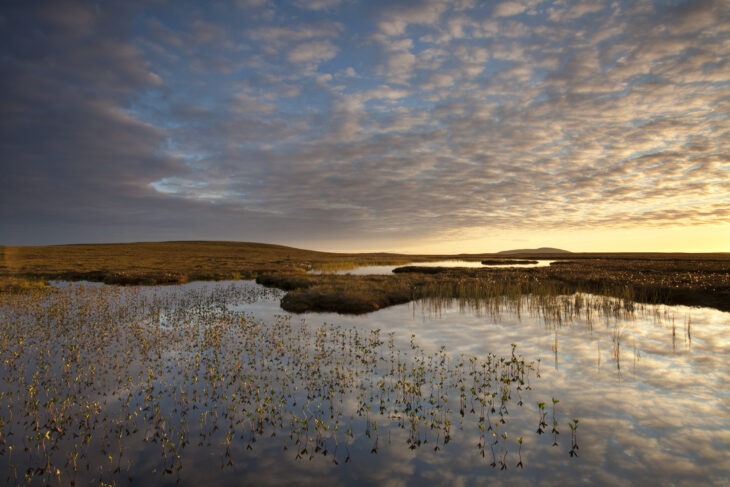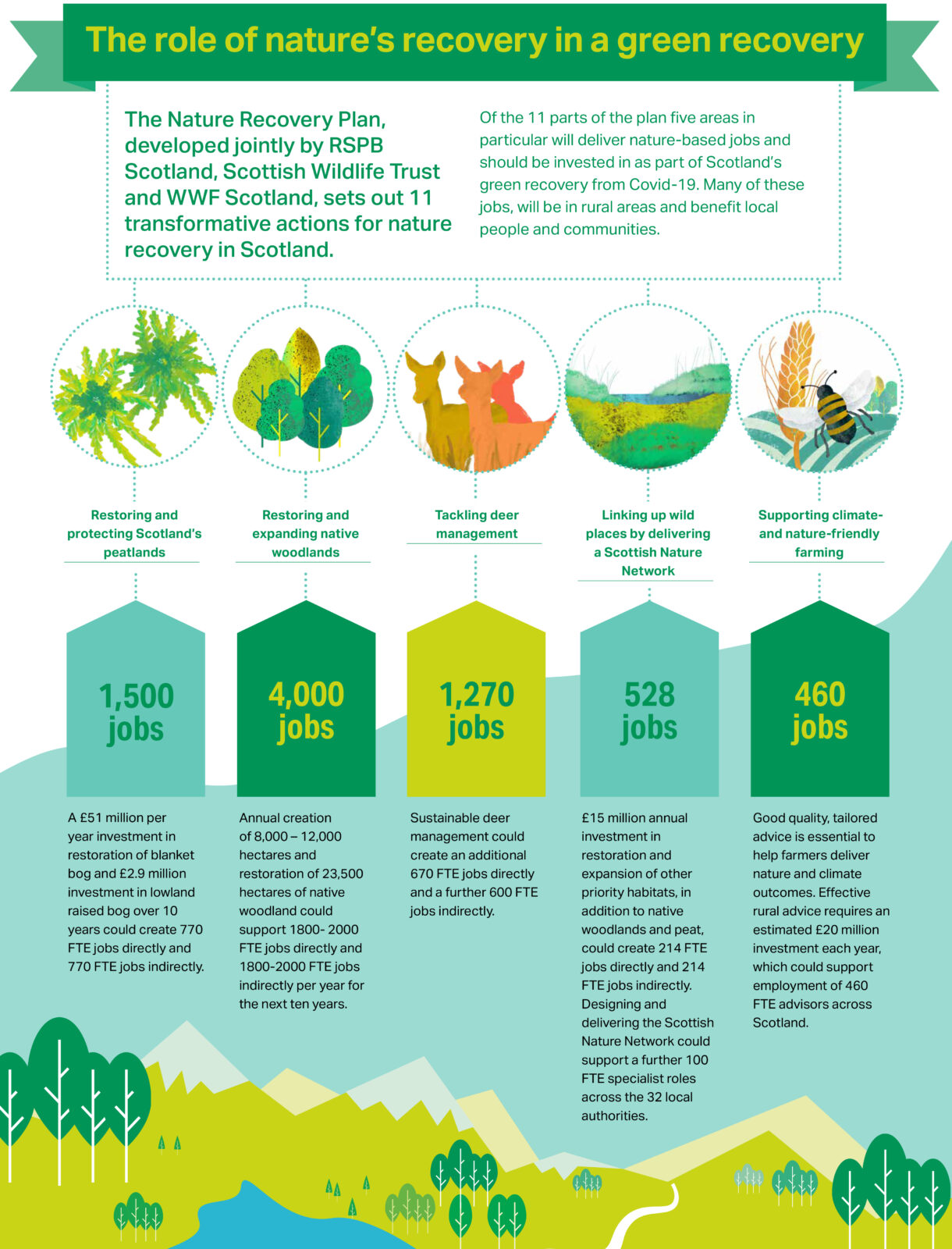An infographic published by the Trust, alongside WWF Scotland and RSPB Scotland, demonstrates how backing our plan for nature’s recovery could create up to 7,000 new jobs, contributing to Scotland’s economic recovery from Covid-19.
This graphic is based on a new analysis by economist Matt Rayment which show that strong investment in nature’s recovery could, over time, create upwards of 4,000 jobs. These are spread across five areas: peatland restoration; native woodland expansion, restoration and management; deer control; delivery of a Scottish Nature Network; and a farming advisory service. A further 3,000 jobs could be supported indirectly.
The analysis shows that there is strong potential for these five areas to contribute to a green recovery from Covid-19 by creating nature-based jobs, helping to make rural and local economies more diverse and resilient and delivering many other benefits. This is just a snapshot of the job opportunities, indicating that the potential for the nature sector beyond these five areas could be huge with the right level of ambition and investment.
The Trust’s Chief Executive Jo Pike said: “These new findings demonstrate how taking these initial steps towards nature’s recovery can significantly benefit Scotland’s economy and society, as well as helping to tackle climate change. Importantly, many of the green collar jobs identified within this analysis could help to sustain rural communities.
“We want to see ambitious commitments to delivering a wide range of nature-based solutions to the serious challenges facing society. Investing in measures such as the creation of native woodland and establishing a new Scottish Nature Network represents an opportunity to both tackle the growing crisis facing nature, and support a transformative green recovery from the impact of Covid-19.”

An ambitious approach to restoring peatlands could create up to 1,500 jobs © Mark Hamblin, 2020VISION
Last year the Trust, together with RSPB Scotland and WWF Scotland, launched a Nature Recovery Plan – calling for five areas of this plan to be prioritised as part of the country’s green recovery.
Despite the enormous challenges currently faced by people around the world, ecological and climate breakdown still threatens our planet, risking further large-scale disruption and displacement of jobs and livelihoods in the future. Globally, nature is eroding at a rate never seen before in human history and one in nine species is threatened with extinction from Scotland.
The figures published today follows the launch of a seminal new report ‘The Economics of Biodiversity: the Dasgupta Review’, which concluded that society has collectively failed to engage with nature sustainably. The report calls for a transformation of economics to recognise the true importance of nature and invest in our natural assets to improve global resilience.
The charities hope that the new figures will help to demonstrate some first steps towards achieving this transformative change in Scotland.
Anne McCall, Director of Scotland for the RSPB, said: “We know that we need transformative change for nature, but that this change can also help us to build a more diverse and resilient economy and provide widespread benefits to people. It is vital that the potential for nature jobs to contribute to Scotland’s economic recovery is not underestimated and undervalued. This is just a snapshot of job opportunities in five areas of nature’s recovery, demonstrating the potential we could unlock by placing nature at the heart of Scotland’s economy”.
Lang Banks, Director of WWF Scotland, said: “Rural communities, particularly those dependent on hospitality and tourism income, have been hit hard this past year. As the Scottish Government rolls its economic recovery measures nature restoration must be a vital part of them. Woodland creation and management, peatland restoration, and supporting farmers to benefit more nature, are relatively quick ways to create and support much needed long-term jobs in rural areas, whilst also contributing to a green recovery.”

Read the full methodology behind the figures in our infographic (pdf)
